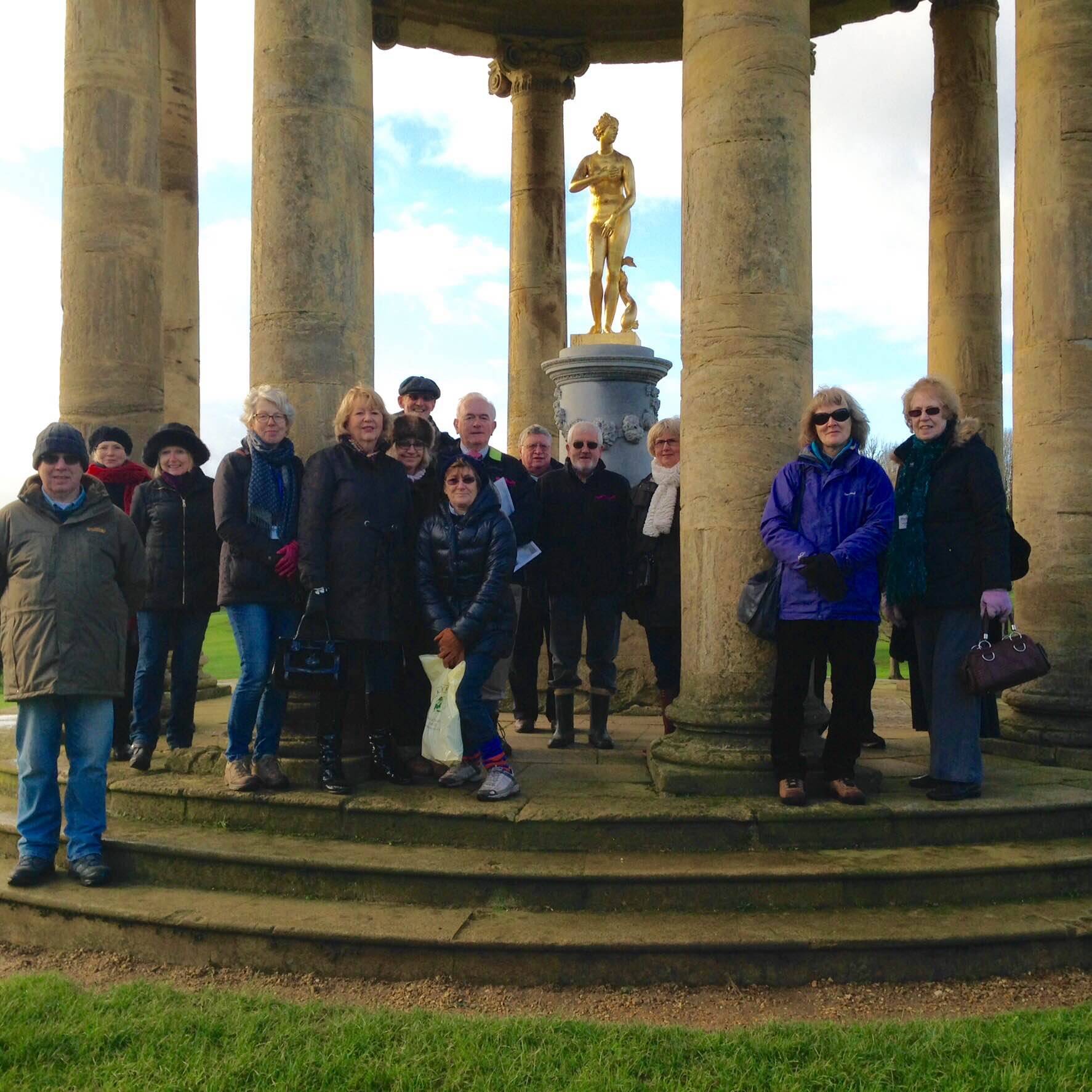A New Year's walk
8 January 2016

On a bright winter’s morning in the first week of January a band of intrepid Stowe House volunteers braved the freezing cold weather to enjoy the annual New Year’s walk. The excursion into some of the wilder, lesser-known areas of the Gardens of National Trust Stowe was ably led by long-standing House guide, Philip Clarke, using evidence from early engravings of the grounds by Rigaud. The focus was on the area to the west of the house, commencing at Nelson’s Walk, a terraced walk lined with an avenue of elms, which was created in 1718 and terminated at its northern end by Nelson's Seat (1719).
The group paused to examine the Boycott pavilions designed by James Gibbs, the western-most of which provided a home for Capability Brown when he took up his first head gardener role at Stowe in the early 1740s. We heard that the eastern pavilion, the earlier of the two, designed in c1728, was originally open at the bottom and provided views along the Warden Hill walk to the southeast and Nelson's Walk to the northeast. It originally had niches in each of the corners, occupied by life-size bronze-leaded statues of Cicero, Faustina, Livia, and Marcus Aurelius. Although these were removed by 1805, the building remained an open pavilion until the 1950s, when Stowe School converted it to a house.
The walk then continued by way of the Imperial Closet and Queen Caroline’s column (with the entrance to its hidden ice house at the rear) and finished at the magnificent Rotunda, which was built in 1720 and looked out onto the Queen's Theatre to the east, and the Queen's and King's Pillars.
All in all, a wonderful way to start another great year at Stowe…..